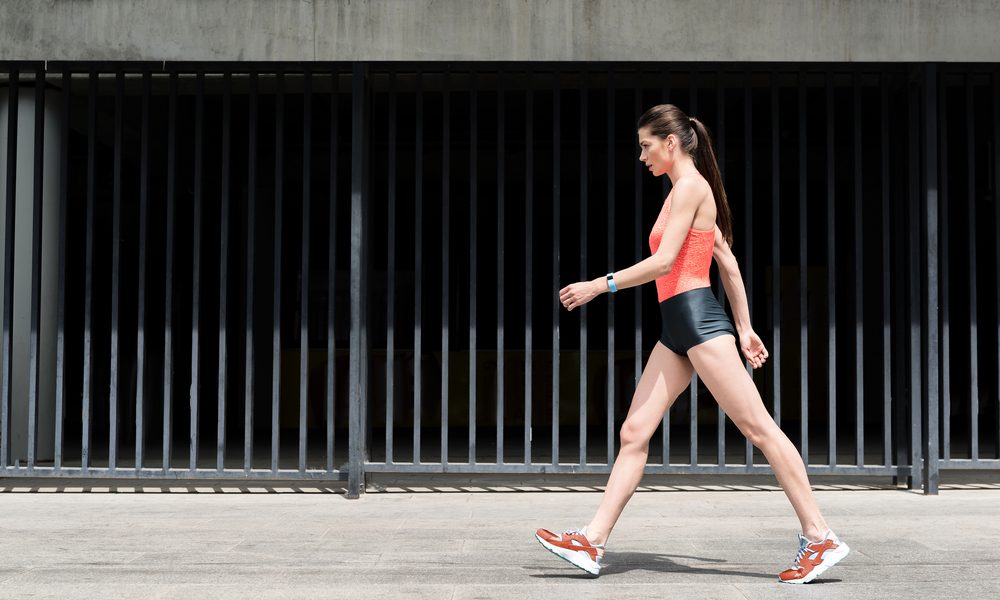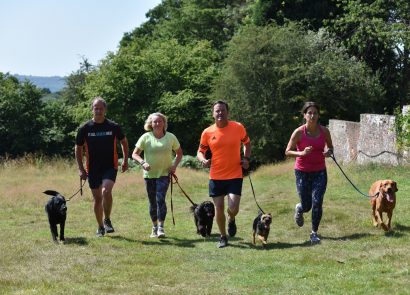Walking is possibly the most underrated types of exercise. Why? Getting your steps up may not seem like it’s having an effect, but walking for a long distance not only burns calories, but it can also increase your stamina and endurance, leading to a healthier body overall. Don’t believe us? Here, the best experts reveal just how walking for miles could give your health goals the boost they need.
Improve your stamina and your mood
Much like a spin class on the weekend or pre-work run, there are many benefits to walking. Sure, the intensity level is lower but, make no mistake, it shouldn’t be underestimated as a legitimate form of exercise. What’s more, walking out in the fresh air is good for mental wellbeing, too.
“Being outside has a positive effect on our mood and can leave us with a sense of calmness and clarity,” says Monique Eastwood, celebrity personal trainer and founder of Eastwood Fit . “If we stride out at a good pace, we can also build good stamina and endurance in the cardiovascular system therefore creating a fitter, healthier body. Our muscles and bones are also being challenged by the distance, terrain and stride, leading to more musculoskeletal endurance and strength.”
Long-distance walking workouts
With long-distance walking providing a bucket-load of benefits, how long does it take to build up our cardiovascular fitness? According to personal trainer and founder of Breathe Fitness Anthony Mayatt, not long at all: “The great thing about [walking] being free and low-impact is that we can do it anytime, and doesn’t require a long preparation unless you’re hill walking or hiking up a mountain.”
To ensure we build up stamina gradually – and don’t encounter any niggles along the way – Monique says it’s a good idea to add a little more challenge every time you go for a walk: “Each week, you could add in a few extra miles or change your terrain and pace to challenge your body more to build endurance and stamina, so that gradually over time you’re walking faster and further.”
Walking workouts and HIIT
Indeed, there are other forms of exercises to boost your stamina that are yours for the taking. Monique’s top recommendation to improve your gait (how you walk), strength and stamina is high intensity interval training. “HIIT will encourage greater demands on your cardiovascular system. Adding in bodyweight and balance moves, as well as using weights, will build strength in your core and leg muscles to assist you to walk longer distances and to help to maintain good tracking with the knee and ankle.”
Anthony agrees, noting that you can easily fit this interval style of training into your daily strolls. “Try running for one minute and walking for three minutes – and do this a few times. Your heart rate will rise quicker, but over time, will help your endurance for long distance activity.”
Try mindful walking
Whether you’re increasing your walking stamina for six miles or 26 miles, Monique recommends opting for a mindful approach when you start. “Walk a distance that will challenge you and notice how you feel afterwards. What areas feel overworked, tight or painful? Build your plan around that, add in balance, stretch, strength training and HIIT to challenge your muscles, bones and cardio fitness.”
Make your walks sociable
Embarking on a long-distance walk is akin to lacing up your trainers for a run, so it’s important to get a few other factors in place first, such as good footwear and potential snacks. And, like with any fitness challenge, buddying up will make it more fun. “The UK is full of walking groups where you can select distances and difficulty levels so you can gradually build up your endurance for walking over time in a social setting,” says Anthony.
Go the distance
Want to increase the distances you cover during your walking workouts? “I would aim to do two to three walks a week and build up your distance each time to the point of reaching marathon distance, adding a couple of miles each week,” Anthony suggests. Ready to march that marathon? You’ve got this!



















